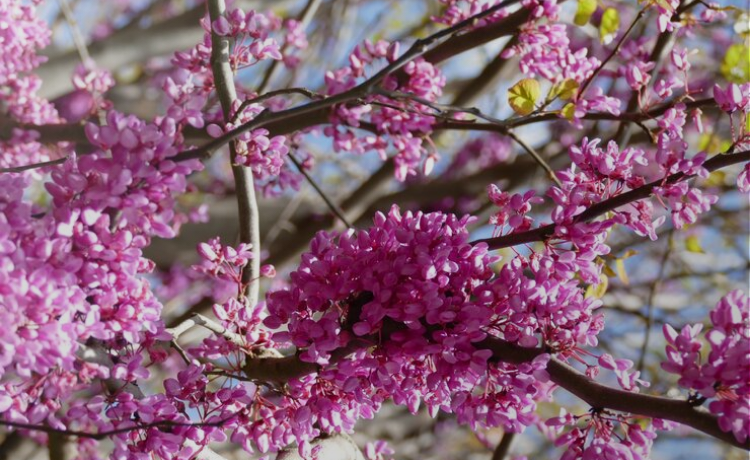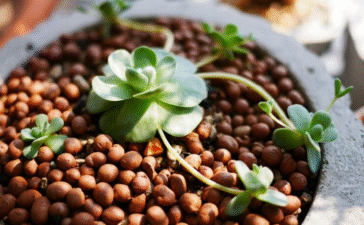The arrival of spring is often announced by a spectacular display of pink flowers bursting from otherwise bare branches. Trees adorned in shades of blush, magenta, and rose create a breathtaking scene that transforms gardens and cityscapes alike. This vibrant color adds a touch of magic to any landscape, drawing the eye and lifting the spirit. From the iconic cherry blossoms that signal new beginnings to the grand magnolias that command attention, tree blooms pink flowers are a favorite among gardeners for good reason. Choosing the right tree for your space is about more than just aesthetics; it’s about creating a sustainable and thriving environment. Understanding the needs of different species, like cherry, magnolia, and dogwood, is the first step toward cultivating a tree that will reward you with beautiful blooms for years to come. This guide will walk you through everything you need to know to select, plant, and care for the perfect pink-flowering tree for your garden.
Why Pink Flowering Trees are a Popular Choice
The appeal of pink-flowering trees is undeniable. Their soft, yet vibrant, hues add a layer of warmth and romance to any garden design. This splash of color can serve as a stunning focal point, breaking up the monotony of green foliage and creating visual interest throughout the blooming season. The sheer beauty of a tree covered in pink blossoms can turn a simple yard into a picturesque sanctuary.
Beyond their visual appeal, many pink flowers hold deep cultural significance. Cherry blossoms, or sakura, are a profound symbol in Japan, representing the beautiful but transient nature of life. This cultural connection adds another layer of meaning for gardeners who appreciate the history and symbolism behind their plants. For homeowners, planting these trees offers the tangible benefits of enhanced curb appeal and increased property value, all while contributing to local biodiversity by supporting pollinators.
Types of Trees That Bloom Pink Flowers
Many different species offer stunning pink blooms. Understanding their unique characteristics will help you choose the best fit for your landscape.
Cherry Blossom Trees
Famous for their springtime festivals, cherry blossom trees are celebrated for their delicate and abundant flowers. Varieties like the Kwanzan cherry (Prunus serrulata ‘Kanzan’) produce showy, double-pink blooms, while the Yoshino cherry (Prunus × yedoensis) offers pale pink to white flowers. Their peak blooming season is typically in early to mid-spring, creating a short-lived but unforgettable display.
Magnolia Trees
Magnolia trees are known for their large, elegant flowers that often appear before the leaves. The Saucer Magnolia (Magnolia × soulangeana) is a popular choice, featuring large, cup-shaped blooms in shades of pink, purple, and white. Other varieties, like the Jane Magnolia (Magnolia ‘Jane’), offer tulip-shaped, reddish-purple flowers with a lighter pink interior. These trees make a dramatic statement in any garden.
Dogwood Trees
Dogwood trees are prized for their unique and graceful bloom structure. The “flowers” are actually modified leaves called bracts, which surround the tiny true flowers. The Pink Dogwood (Cornus florida ‘Rubra’) is a classic choice, showcasing beautiful pink to reddish-pink bracts in the spring. They also offer attractive foliage in the fall and bright red berries that attract birds.
Redbud Trees
Often overlooked, Redbud trees (Cercis canadensis) produce a profusion of tiny, magenta-pink flowers directly on their branches and trunk before their heart-shaped leaves emerge. This unique blooming habit creates a striking visual in early spring. Redbuds are typically smaller trees, making them suitable for various garden sizes.
Peach Trees
While primarily grown for their fruit, ornamental peach trees (Prunus persica) are cultivated for their spectacular spring blossoms. Varieties like ‘Bonfire’ offer vibrant pink flowers and deep burgundy foliage, adding color and interest long after the blooms have faded. They provide both beauty and, in some cases, a delicious harvest.
Other Popular Pink Flowering Trees
Other notable trees include the Flowering Crabapple (Malus spp.), which offers fragrant pink blossoms and small, ornamental fruits, and the Silk Tree (Albizia julibrissin), also known as the Mimosa tree, with its unique, fluffy pink flower clusters that bloom in the summer.
When Do Pink Flowering Trees Bloom?
The timing of blooms is largely dependent on the tree species and the local climate. Most pink-flowering trees, including cherry blossoms, magnolias, and redbuds, are spring bloomers, with their flowers appearing from March to May in the Northern Hemisphere. However, some trees, like certain varieties of camellias or the winter-flowering cherry, can provide color in the colder months.
Climate is a critical factor. In warmer zones, trees may bloom earlier, while in colder regions, the show might be delayed until late spring. Unseasonably warm or cold weather can also shift the blooming period. Sufficient sunlight, proper soil conditions, and adequate water are all essential for triggering and sustaining a healthy bloom cycle.
How to Grow and Plant Pink Flowering Trees
Successful growth starts with proper planting. Following a few key steps will set your tree up for a long and healthy life.
Choosing the Right Tree for Your Climate
Before you buy, check the USDA Plant Hardiness Zone for your area. Select a tree variety that is well-suited to your region’s minimum winter temperatures. A tree rated for a warmer zone may not survive a cold winter, while some trees require a period of cold dormancy to produce flowers.
Soil and Sunlight Needs
Most pink-flowering trees thrive in well-drained soil with a slightly acidic to neutral pH (around 6.0 to 7.0). Heavy clay soil can lead to root rot, so amending it with organic matter like compost is beneficial. The majority of these trees require full sun—at least six hours of direct sunlight per day—to produce the most abundant and vibrant blooms.
Planting Techniques
When planting, dig a hole that is two to three times wider than the root ball but no deeper. Placing the tree too deep can suffocate the roots. Gently loosen the roots before placing the tree in the hole, and ensure it is standing straight. Backfill the hole with soil, lightly tamping it down to remove air pockets. Water the tree thoroughly after planting to help it settle.
Tree Care for Pink Blooming Trees
Ongoing care is essential to keep your tree healthy and ensure a beautiful display of flowers each year.
Watering Needs
Newly planted trees require consistent watering, typically once or twice a week, to establish a strong root system. Once established, most pink-flowering trees are moderately drought-tolerant but will perform best with regular watering during dry spells. Water deeply at the base of the tree to encourage deep root growth.
Fertilizing
A balanced, slow-release fertilizer formulated for flowering trees can be applied in early spring to promote healthy growth and abundant blooms. Avoid high-nitrogen fertilizers, which can encourage leaf growth at the expense of flowers. Follow the product instructions carefully to prevent over-fertilizing.
Pruning Tips
Pruning is crucial for maintaining the tree’s shape, health, and flower production. The best time to prune is generally right after the tree has finished blooming. This prevents you from accidentally cutting off the buds that will form next year’s flowers. Remove any dead, damaged, or crossing branches to improve air circulation and light penetration.
Pest and Disease Control
Common issues for pink-flowering trees include fungal diseases like powdery mildew and pests like aphids or Japanese beetles. Proper spacing, good air circulation, and watering at the base of the tree can help prevent many diseases. If pests or diseases appear, use horticultural oils or insecticidal soaps as a first line of defense.
Why Are My Pink Flowering Trees Not Blooming?
It can be disappointing when your tree fails to bloom. Usually, the cause is related to its environment or care routine.
Common Issues
Lack of sunlight is a primary reason for poor flowering. If your tree is shaded by other plants or buildings, it may not get the energy it needs to produce buds. Incorrect pruning, especially trimming in late summer or fall, can remove next year’s flower buds. Over-fertilizing with nitrogen can also inhibit blooms. Other factors include the tree’s age (some take a few years to mature) or stress from drought or disease.
Troubleshooting Tips
First, assess the tree’s location. Does it get enough sun? If not, you may need to move it or prune surrounding plants. Review your pruning schedule and ensure you are trimming at the right time. Check your fertilizer to make sure it is not too high in nitrogen. For young trees, patience is often the key.
Best Pink Flowering Trees for Small Gardens or Yards
You don’t need a large property to enjoy these beautiful trees. Many compact varieties are perfect for smaller spaces.
Compact Varieties
Dwarf cherry blossoms, like Prunus incisa ‘Kojo-no-mai’, offer the same beautiful blooms on a much smaller scale. Compact dogwood varieties or multi-stemmed redbuds are also excellent choices for tight spaces. These smaller trees can be grown in large containers on a patio or integrated into a mixed border without overwhelming the garden.
Landscaping Tips
In a small garden, use a single pink-flowering tree as a focal point. Underplant it with low-growing perennials or groundcovers that complement the pink blooms. Placing the tree near a patio or window allows you to enjoy its beauty up close.
Pink Flowering Trees in Landscaping
Incorporating these trees into your landscape design can elevate the entire look of your property.
Using Pink Flowering Trees in Design
A pink-flowering tree planted in the front yard provides immediate curb appeal. On a patio, a smaller variety in a container can add a vertical element and a pop of color. In a larger garden bed, use a pink-flowering tree as an anchor, surrounded by plants with contrasting colors and textures.
Pairing with Other Plants
Complement your pink-flowering tree with plants that have contrasting flower colors, such as blue or purple salvias and hydrangeas. Spring-blooming bulbs like tulips and daffodils can create a beautiful layered look when planted at the base of the tree. Low-growing shrubs with interesting foliage can provide year-round interest.
Pruning and Maintaining Pink Flowering Trees
Proper pruning is one of the most important maintenance tasks for ensuring a healthy, beautiful tree.
When to Prune
As a general rule, prune spring-flowering trees immediately after they finish blooming. This gives the tree plenty of time to develop new growth and set buds for the following year. Pruning in late fall or winter will likely remove flower buds and reduce the spring display.
Step-by-Step Pruning
Start by removing any dead, diseased, or broken branches at any time of year. Next, identify and remove any branches that are crossing or rubbing against each other, as this can create wounds where diseases can enter. Finally, selectively thin out some of the interior branches to improve light and air circulation throughout the canopy. Make clean cuts just outside the branch collar to promote quick healing.
Frequently Asked Questions (FAQs)
Can I grow pink-flowering trees in pots?
Yes, many dwarf or compact varieties of pink-flowering trees, such as dwarf cherry blossoms or smaller magnolias, can thrive in large containers. Ensure the pot has excellent drainage and use a high-quality potting mix. Container-grown trees will require more frequent watering and fertilizing than those planted in the ground.
What’s the difference between magnolia and cherry blossom trees?
While both have stunning spring blooms, there are key differences. Magnolia flowers are typically larger, cup- or star-shaped, and appear before the leaves. Cherry blossoms are smaller, more delicate, and often bloom in clusters as the leaves emerge. Their branch structures and bark textures are also distinct.
How can I make my pink-flowering tree bloom more abundantly?
To encourage more blooms, ensure your tree receives at least six hours of direct sunlight daily. Use a low-nitrogen, high-phosphorus fertilizer in early spring. Water regularly during dry periods, and prune at the correct time—right after flowering—to avoid removing next year’s buds.
Are there any drought-resistant pink-flowering trees?
Once established, some pink-flowering trees are quite drought-tolerant. The Eastern Redbud (Cercis canadensis) and certain varieties of crabapple are known to handle dry conditions well. However, all trees will benefit from occasional deep watering during prolonged droughts, especially in their first few years.
What’s the lifespan of pink-flowering trees like cherry blossoms?
The lifespan varies by species. Ornamental cherry trees typically live for 15 to 25 years, though some can live longer with excellent care. Magnolia trees, on the other hand, are very long-lived, with many specimens lasting for 80 years or more.
Also Check: “purple and flowers“
Embrace the Beauty of Pink Blooms
Trees that bloom with pink flowers offer a unique combination of elegance, color, and natural beauty. Whether you have a spacious yard or a small patio, there is a perfect pink-flowering tree waiting to transform your space. By choosing the right variety for your climate and committing to proper planting and care, you can enjoy a spectacular display of pink blossoms year after year. Take the time to select your tree, plant it with care, and watch as your garden comes alive with color.












